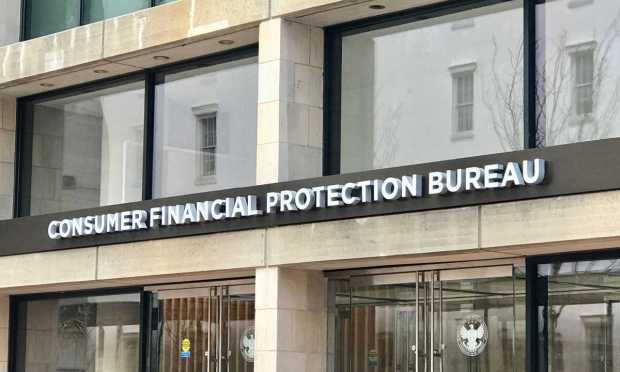
Reading the Thursday (May 16) Supreme Court ruling upholding the constitutionality of the Consumer Financial Protection Bureau’s funding mechanisms — and ensuring the agency’s survival — takes one through centuries of history.
All the way back to England, Parliament and the Crown. All the way back to the inner workings of the U.S. colonies, the First Congress and the Dodd-Frank Act of the last decade.
And beyond.
In a nutshell, had the court accepted the challenge that the funding of the agency was unconstitutional, as the plaintiffs charged, the agency might have faced an existential reckoning, where, by extension, more than a decade of rulemaking and legal actions governing the financial services industry might have been challenged as unconstitutional too.
The highest court in the land has thus effectively struck down the ruling at the end of 2022 from the U.S. Court of Appeals for the Fifth Circuit that the funding structure did not comply with the appropriations clause.
The court’s 7-2 decision lets the CFPB stand and paves the path for other in-process rulemaking and enforcement efforts to proceed.
The case hinged on how Congress had set up the funding of the CFPB, which was done through the Federal Reserve, and whether that system had violated the Constitution’s appropriations clause. The plaintiffs, and those contending the setup was unconstitutional, pointed to the fact that the agency is not funded through an annual appropriation from Congress. Instead, the CFPB is supported by the Federal Reserve System’s earnings, subject to an inflation-adjusted cap. Those funds are used to pay the expenses of the CFPB in carrying out its duties and responsibilities.
In the majority decision, penned by Justice Clarence Thomas, the court ruled: “Under the appropriations clause, an appropriation is simply a law that authorizes expenditures from a specified source of public money for designated purposes. The statute that provides the bureau’s funding meets these requirements. We therefore conclude that the bureau’s funding mechanism does not violate the appropriations clause.”
“In this case, we must decide the narrow question whether this funding mechanism complies with the appropriations clause,” Thomas added. “We hold that it does.”
Elsewhere in the ruling, the prevailing justices said that the funding mechanism is consistent with historical practices, drawing parallels to the fee-based funding schemes used by the Customs Service and the Postal Service in the early days of the republic. Furthermore, the court rejected arguments that the appropriations clause requires time-limited or annually approved funding, noting that the Constitution does not explicitly limit the duration of appropriations for purposes other than the support of armies.
In her own brief concurring with Thomas’s writing, Justice Elena Kagan noted: “Throughout our history, Congress has created a variety of mechanisms to pay for government operations. Some schemes specified amounts to go to designated items; others left greater discretion to the executive. Some were limited in duration; others were permanent. Some relied on general treasury moneys; others designated alternative sources of funds. Whether or not the CFPB’s mechanism has an exact replica, its essentials are nothing new. And it was devised more than two centuries into an unbroken congressional practice, beginning at the beginning, of innovation and adaptation in appropriating funds. The way our government has actually worked, over our entire experience, thus provides another reason to uphold Congress’s decision about how to fund the CFPB.”
In a dissenting opinion, Justice Samuel Alito, joined by Justice Neil Gorsuch, argued that the CFPB’s funding mechanism violates the appropriations clause by providing the agency with an unprecedented level of financial autonomy. The dissent maintained that the clause demands greater legislative control over the source and disposition of funds used to finance government operations and projects, and the CFPB’s funding structure undermines this essential check on executive power.
The ruling opens the doors for the agency to proceed with its rulemaking on open banking and to continue to try to shape banking fees (such as credit card late fees). It’s likely though that legal challenges will continue to be lobbed against the agency and each of those efforts, but the major fundamental challenge of how the agency would be structured, and whether years of efforts might be exposed to other legal challenges, seems to have been put to rest.
Opponents and supporters of the agency began to weigh in soon after the decision was handed down. House Financial Services Committee Chairman Patrick McHenry, said Thursday in a statement that the decision is a “setback” but “Republicans will continue the fight to rein in the rogue CFPB.”
Beth Milito, executive director of the National Federation of Independent Business’s Small Business Legal Center said in a statement: “Small businesses will feel the negative impact of this decision. We are disappointed with the court’s ruling, which will ultimately leave small businesses with expensive penalties and burdensome inspections at the hands of the CFPB.”
Separately, Sen. Sherrod Brown said in his own statement: “Today’s decision protects workers and consumers who don’t have high-paid lobbyists and lawyers to fight their battles for them. We created the CFPB to be their voice, and I will continue to ensure the agency is able to do its job protecting consumers from Wall Street greed.”